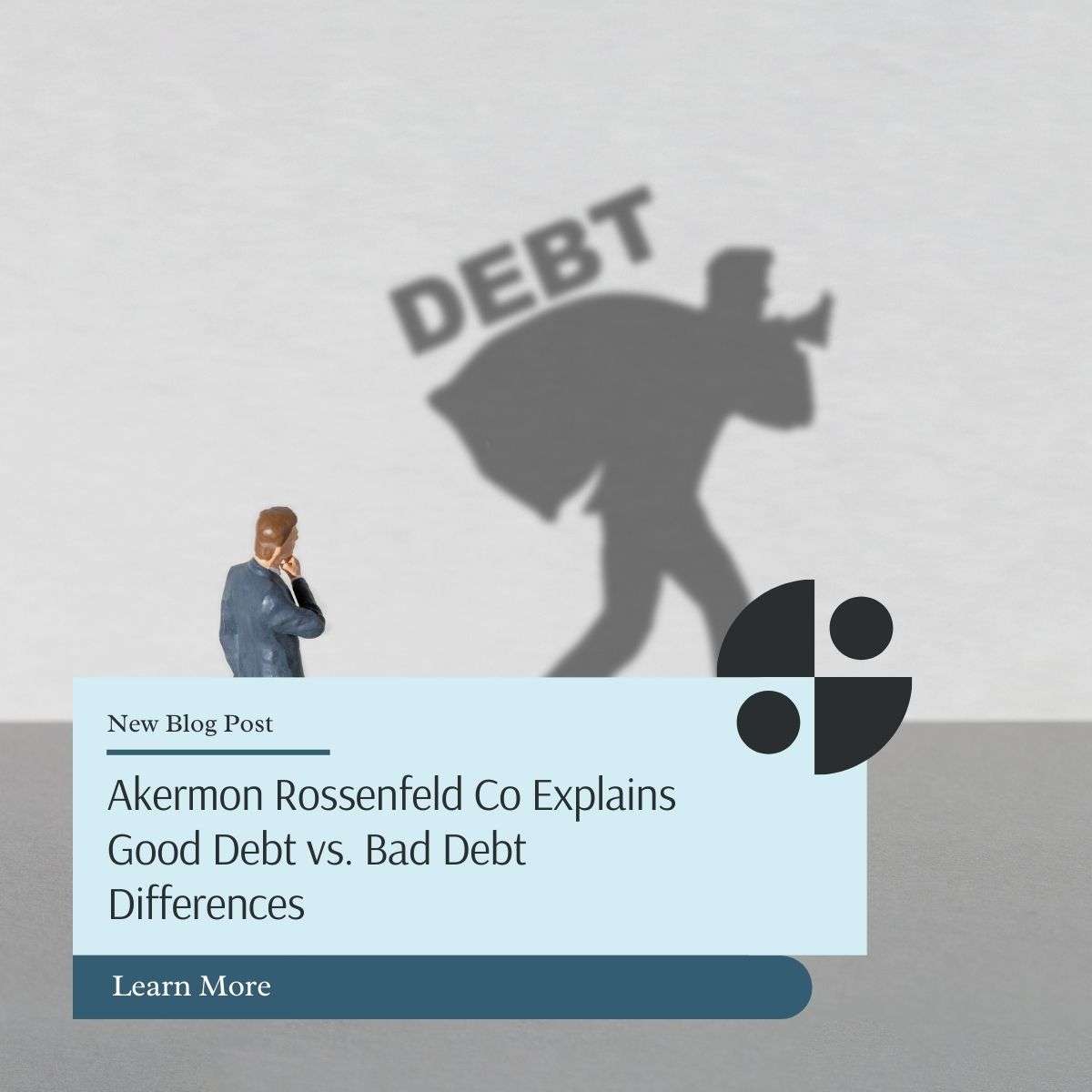Akermon Rossenfeld Co Explains Good Debt vs. Bad Debt Differences
Debt is often viewed as a burden, something to be avoided at all costs. However, not all debt is created equal. At Akermon Rossenfeld Co, a premier debt collection agency with years of experience in helping individuals and businesses manage their financial obligations, we understand that debt can be a powerful tool—when used wisely. The key is knowing the difference between good debt and bad debt. This distinction can make all the difference in your financial health and future.
What Is Good Debt?
Good debt is the kind that contributes to your financial growth and stability. It’s an investment that should pay off in the long run, either by increasing your net worth or by providing some sort of valuable return.
Examples of Good Debt:
Mortgage Loans: One of the most common forms of good debt is a mortgage. When you buy a home, you’re investing in a property that, in most cases, will appreciate over time. Unlike rent, which is money spent with no return, mortgage payments build equity in a tangible asset. Over the years, this can lead to significant financial gains, especially in a strong real estate market.
Student Loans: Education is another classic example of good debt. While student loans can be daunting, they are often necessary to gain the skills and qualifications that can lead to a higher-paying job. The key is to ensure that the education you’re investing in will provide a return in the form of increased earning potential.
Business Loans: Borrowing money to start or expand a business can also be considered good debt. If the business is successful, it can generate enough revenue to not only pay off the loan but also provide a profit. Entrepreneurs often take on debt to fuel growth, develop new products, or expand into new markets, with the expectation that these investments will pay off down the road.
What Is Bad Debt?
Bad debt, on the other hand, is the kind that doesn’t provide any real value or return on investment. It’s the type of debt that can drag you down financially and make it harder to achieve your goals.
Examples of Bad Debt:
Credit Card Debt: High-interest credit card debt is one of the most common examples of bad debt. While credit cards can be convenient, carrying a balance from month to month can lead to significant financial strain. Interest rates on credit cards are often much higher than other types of loans, meaning you could end up paying far more than you originally borrowed—sometimes for items that lose value quickly or provide no long-term benefit.
Auto Loans for New Cars: While a car is a necessity for many, financing a brand-new vehicle can be a form of bad debt. Cars depreciate rapidly, often losing value as soon as they leave the dealership. If you take out a loan for a car that’s more expensive than you need, or with a high interest rate, you might find yourself owing more than the car is worth.
Personal Loans for Discretionary Spending: Borrowing money to finance a vacation, luxury items, or other non-essential purchases can also fall into the bad debt category. These loans don’t contribute to your financial growth and can often be avoided by saving up instead.
Making Smart Debt Decisions
At Akermon Rossenfeld Co, we believe that understanding the difference between good and bad debt is crucial for maintaining financial health. Before taking on any debt, it’s important to consider whether the debt will help you achieve your long-term goals or if it will hold you back.
Our team at Akermon Rossenfeld Co has seen firsthand how unmanaged debt can spiral out of control, turning what could have been a manageable situation into a financial crisis. That’s why we’re dedicated to helping our clients not just manage their existing debts, but also make informed decisions about taking on new debt.
In summary
debt isn’t inherently good or bad—it all depends on how you use it. By focusing on good debt that adds value and avoiding bad debt that drains your resources, you can use debt as a tool to build a more secure and prosperous future.
#financialwisdom
#debtmanagement
#gooddebtbaddebt
#smartinvesting
#financialliteracy
#debtfreejourney
#moneymatters
#financialplanning
#wealthbuilding
#debtawareness
#smartborrowing
#financialhealth
#investinyourfuture
#debteducation
#moneytip
Visit:- https://www.provenexpert.com/e....n-us/akermon-rossenf

 News Feed
News Feed  Albums
Albums  Popular Posts
Popular Posts  Memories
Memories  Pokes
Pokes  Blog
Blog  Market
Market  Directory
Directory  Events
Events  Games
Games  Jobs
Jobs  Offers
Offers  Find friends
Find friends  Common Things
Common Things  Fundings
Fundings 